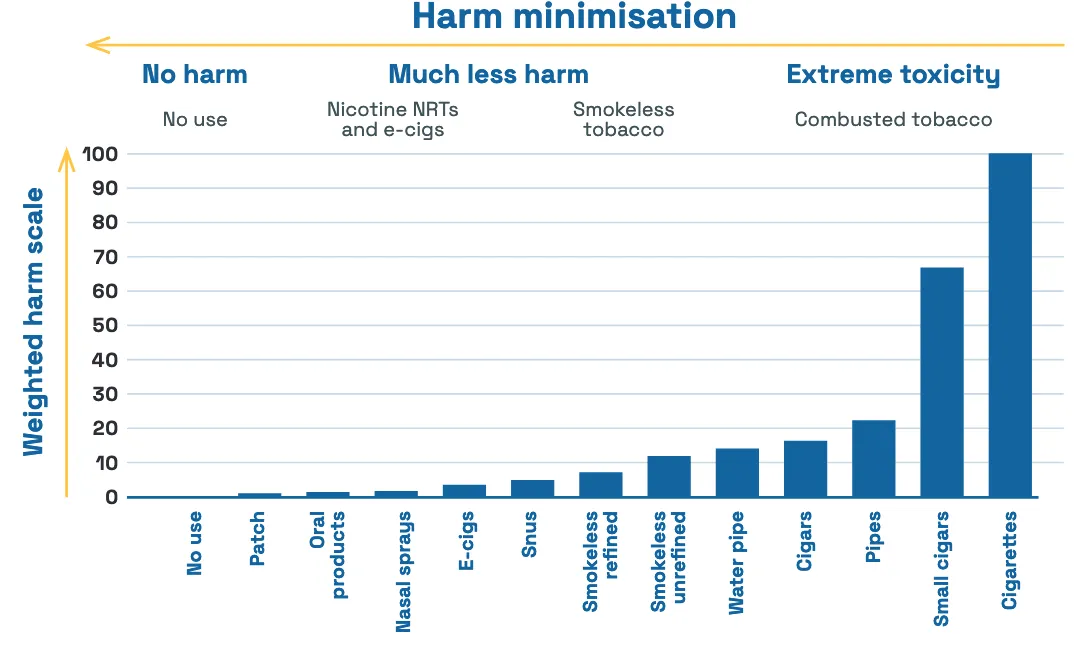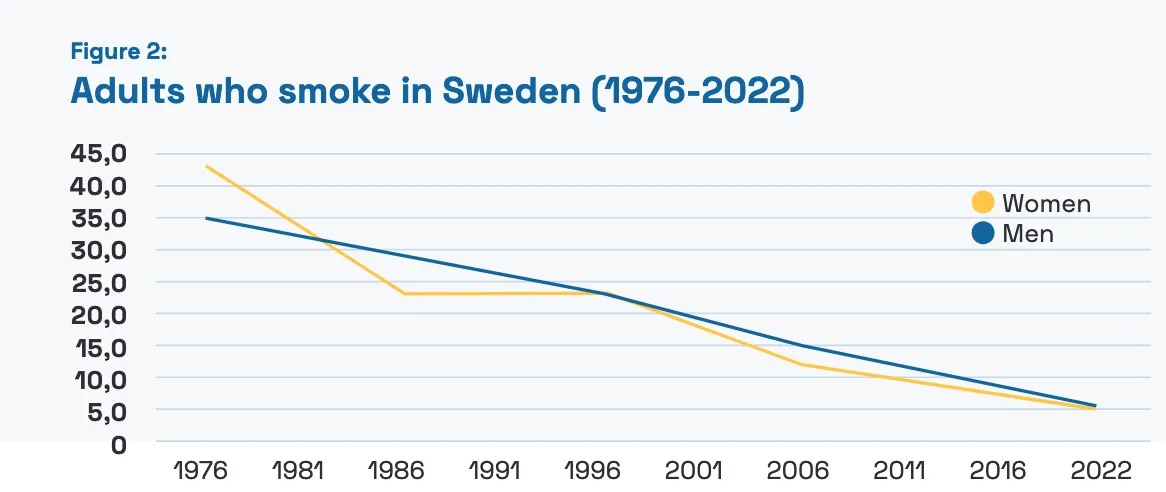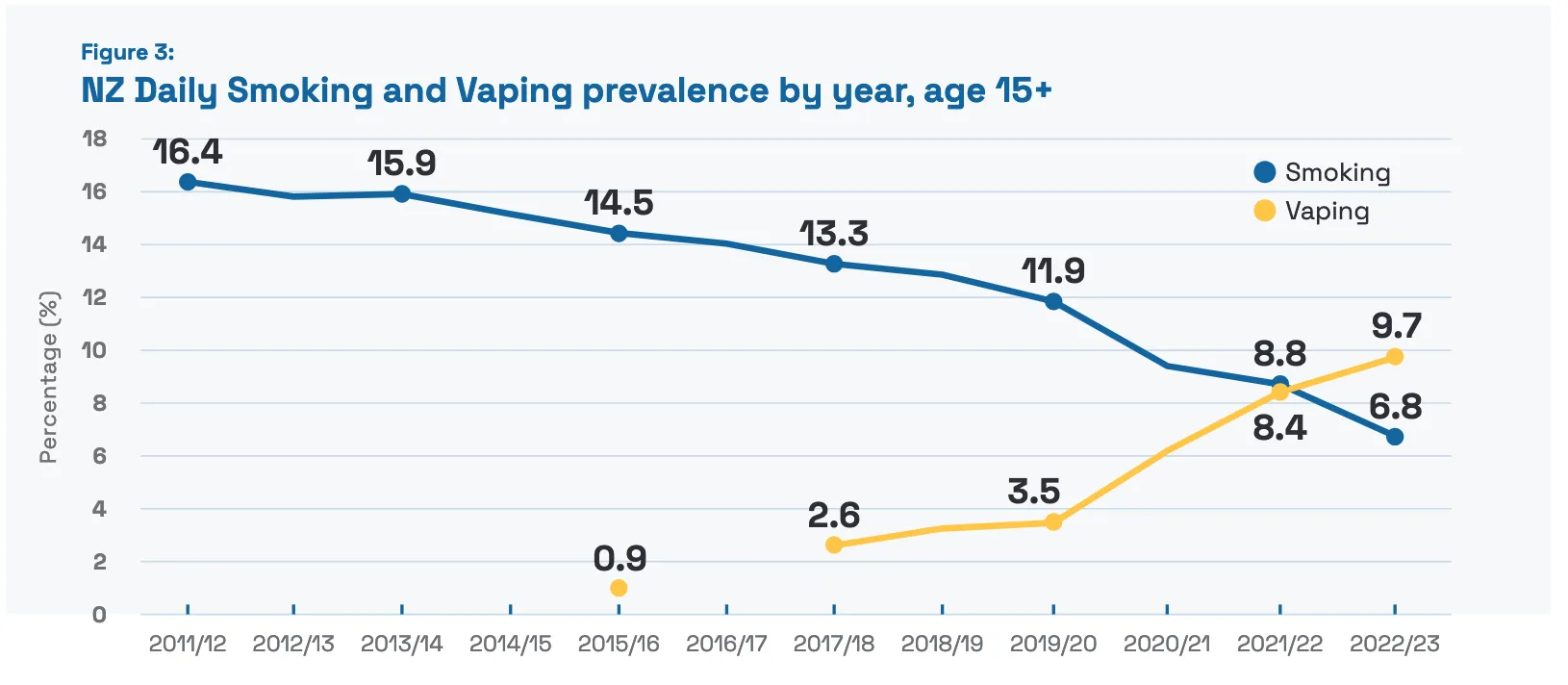
Note: This article is intended for adults only. The Canadians for Tobacco Harm Reduction Association (CanTHR) is strongly opposed to youth use of Nicotine, and any individuals under the age of 18, 19, or 21 (depending on your province of residence) are advised to quit entirely. For advice on how to quit successfully, it is recommended that you contact your province’s quit smoking service.
Each year starting on January 19th, Canada celebrates National Non-Smoking Week (NNSW), a period which the federal government defines as “a time to reflect on the benefits of a smoke-free life and support people to have the confidence and commitment and resources to quit smoking”. Quitting smoking is one of the most popular New Years resolutions, and by arriving just a few weeks later, NNSW serves as a great reminder that quitting smoking is one of the best things you can do for your health. However, many individuals enjoy Nicotine in the same way that coffee drinkers appreciate the caffeine in a fine cup of coffee, and despite wanting to quit smoking, they would prefer to continue using Nicotine but in a less harmful manner. For these individuals, Tobacco Harm Reduction (THR) is a great way to enjoy Nicotine while significantly improving their health. For example, research suggests that nicotine pouches have a risk profile approximately 0.1% that of cigarette smoking, while vaping is estimated to be 95% safer than cigarette smoking. For reference, the below chart displays the relative risk of various Nicotine products in comparison to cigarettes:
 Figure 1: The weighted harm of combustible tobacco products compared to non-combustible nicotine alternatives, placed along the “harm minimization continuum” by Abrams et al.
Figure 1: The weighted harm of combustible tobacco products compared to non-combustible nicotine alternatives, placed along the “harm minimization continuum” by Abrams et al.
One thing to remember before getting started with THR is that although there are much less harmful alternatives to cigarette smoking, no nicotine product is fully risk free - the only way to eliminate all risk completely is total abstinence.
Choosing a Reduced-Risk Alternative to Smoking
The first step in embracing THR is to find the reduced-risk solution that most aligns with your preferred method of Nicotine delivery. For some, Nicotine pouches or Swedish Snus is a great option as you can use it discreetly (and while indoors), and there’s no inhalation involved. For others, the actual act of smoking may be enjoyable, and trying a vape or heat-not-burn product may be more desirable. A wide range of tobacco harm reduction products exist, but unfortunately due to misguided policies which are not backed by evidence, Nicotine pouch flavors have been restricted to mint only, and many provinces have begun enacting bans on flavored vapes. Canadians for Tobacco Harm Reduction (CanTHR) is committed to informing? these misguided policies. It is highly recommended that you join us to keep up to date with recent developments and learn how you can help advocate to ensure safer alternatives to cigarette smoking are accessible, affordable, and acceptable.
THR Success Stories: Sweden & New Zealand
In recent years, there has been an increasing number of countries who recognize that not all smokers want to quit Nicotine and have been adopting THR approaches to tremendous success. The original case study is Sweden, where approximately 20% of males use Snus. With cigarette use at 5% of the population, Sweden has achieved the EU’s goal of being a smoke-free country ( < 5% of adults smoking) 16 years in advance of the EU’s goal date of 2040 while also having the lowest rates of tobacco-related illness in the EU:
 Figure 2: Adults who smoke in Sweden (Quitting Strong: New Zealand’s Smoking Cessation Success Story).
Figure 2: Adults who smoke in Sweden (Quitting Strong: New Zealand’s Smoking Cessation Success Story).
A second success story has been New Zealand, a country who has seen their smoking rate halved in only five years due to the widespread acceptance of smoke-free products. Whereas Sweden has seen success with Snus, according to NZ Health Minister Ayesha Verrall, “vaping has played an important role in the record reduction in New Zealanders’ smoking over the last few years”, and this can be seen in the graph below:
 Figure 3: NZ Daily Smoking and Vaping prevalence by year, age 15+. Source: Ministry of Health, 2023, Annual Data Explorer 2022/23: New Zealand Health Survey [Data File].
Figure 3: NZ Daily Smoking and Vaping prevalence by year, age 15+. Source: Ministry of Health, 2023, Annual Data Explorer 2022/23: New Zealand Health Survey [Data File].
The difference in both countries’ preferred THR products highlights the important role that accessibility plays in helping people quit smoking. By embracing THR and giving consumers a variety of choices in which product they prefer to use, a country will see higher rates of smoking cessation.
My Personal THR Journey
I first began smoking at the age of 18 (I’m 35 now). After trying a cigarette during a night out, I soon discovered that I enjoyed the boost in alertness and focus that Nicotine gave me. However, as someone who loves physical activities such as hiking and weightlifting, I soon found cigarette smoking to be at odds with my otherwise healthy lifestyle and knew that I would need to either quit smoking or find a healthier alternative. Approximately six months after trying my first cigarette, I soon discovered Swedish Snus by way of an online discussion board and was intrigued. Used by roughly 20% of Swedish males (who also have the lowest rates of smoking related illness in the EU), Snus has a risk profile similar to that of vaping.). After trying Snus for the first time, I quickly fell in love with it and found it preferable to cigarettes for several reasons. Aside from the clear health benefits of quitting smoking, I was also able to discreetly use Snus during my university classes and while at work, enabling me to benefit from a focus boost during the times I wanted it most (no more having to wait to go outside for a smoke!). Moreover, I no longer smelled like cigarette smoke all the time, and didn’t disturb others with harmful secondhand smoke. I’ve also experimented with both vaping and heat-not-burn products (both of which I enjoy on occasion), but my personal preference has always been Snus and (more recently) Nicotine pouches.
Get Started!
In summary, National Non-Smoking Week is a great time to start your quit journey. If you want to quit smoking but not necessarily Nicotine, then Tobacco Harm Reduction (THR) is a great approach to take and has certainly worked for me along with plenty of other former smokers. My advice is to experiment with different THR options and see which one is right for you. Lastly, I once again encourage you to join us and learn how you can keep safer alternatives to cigarette smoking accessible, affordable, and acceptable!
